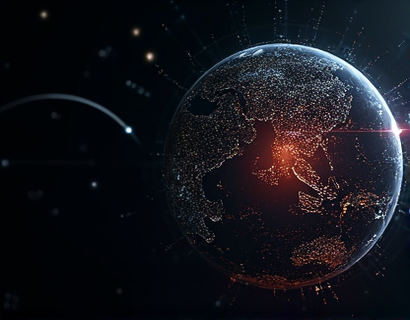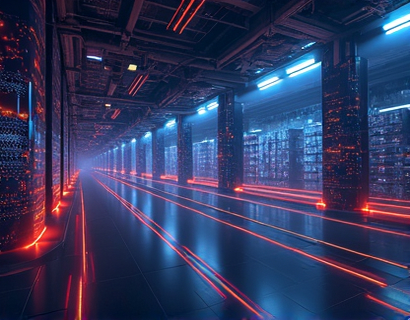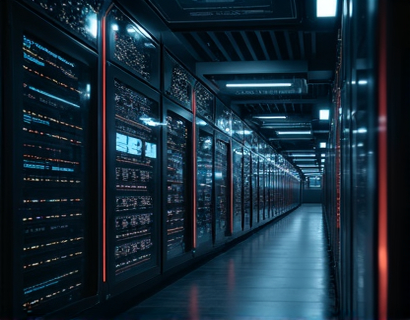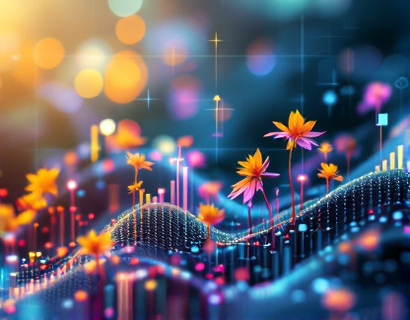Aquaculture Software: Revolutionizing Business Operations and Resource Management
In the rapidly evolving landscape of aquaculture, industry leaders are increasingly turning to specialized software solutions to revolutionize their business operations and resource management. These advanced tools are designed to streamline processes, enhance productivity, and optimize resource use, providing essential functionalities that enable owners and managers to navigate the complexities of modern aquaculture with greater ease and efficiency.
The aquaculture industry, encompassing the cultivation of marine and freshwater species for food, has experienced significant growth over the past decades. This expansion, driven by rising global demand for seafood, has brought about new challenges in managing large-scale operations. Traditional methods of operation and management are often inadequate to handle the scale and complexity of modern aquaculture facilities. This is where specialized software solutions come into play, offering a comprehensive suite of tools tailored to the unique needs of the industry.
Streamlining Operations
One of the primary benefits of aquaculture software is its ability to streamline operations. These systems integrate various aspects of the business, from production planning to inventory management, into a cohesive platform. By centralizing data and processes, software solutions reduce the need for manual record-keeping and minimize the risk of human error. This integration allows for real-time monitoring and control, enabling managers to make informed decisions quickly and efficiently.
For instance, production planning tools help in forecasting demand, optimizing feed usage, and scheduling harvesting activities. These tools take into account historical data, market trends, and environmental factors to provide accurate and actionable insights. As a result, aquaculture businesses can operate more smoothly, reducing downtime and increasing overall productivity.
Enhancing Productivity
Productivity enhancement is another critical area where aquaculture software shines. Automation of routine tasks frees up staff to focus on more strategic activities, thereby improving overall efficiency. Automated feeding systems, for example, ensure that fish receive the right amount of feed at the right times, reducing waste and promoting healthy growth. Similarly, automated monitoring systems can track water quality parameters such as temperature, pH, and dissolved oxygen levels, alerting staff to any deviations that could impact fish health.
Moreover, labor management tools help in scheduling and tracking employee hours, ensuring compliance with labor laws and optimizing workforce utilization. By providing a clear overview of staff availability and workload, these tools help in making informed hiring and scheduling decisions, reducing labor costs and improving morale.
Optimizing Resource Use
Resource optimization is vital for the sustainability and profitability of aquaculture operations. Software solutions play a crucial role in managing resources effectively, from feed and energy to water and space. Advanced algorithms and data analytics enable precise calculations and predictions, ensuring that resources are used efficiently without compromising on production goals.
Feed management systems, for example, analyze the growth rates of fish and adjust feed quantities accordingly, minimizing waste and reducing costs. Energy management tools monitor and optimize the use of electricity, helping to lower operational expenses and reduce the environmental footprint. Water quality management systems ensure that water is used and treated efficiently, maintaining optimal conditions for fish while minimizing water usage and waste discharge.
Data-Driven Decision Making
One of the most significant advantages of aquaculture software is its ability to provide data-driven insights. By collecting and analyzing vast amounts of data, these systems offer valuable insights that can inform strategic decisions. Managers can access detailed reports and dashboards that highlight key performance indicators, such as production yields, cost efficiencies, and environmental impact.
These insights enable businesses to identify areas for improvement, optimize processes, and adapt to changing market conditions. For example, by analyzing historical production data, managers can identify patterns and trends that inform future planning and investment decisions. This data-driven approach not only enhances operational efficiency but also supports long-term growth and sustainability.
Improving Fish Health and Welfare
Fish health and welfare are critical components of successful aquaculture operations. Software solutions contribute to this by providing tools for monitoring and managing fish health. Integrated health management systems track the health status of fish populations, alerting staff to potential issues such as disease outbreaks or stress factors. Early detection and intervention can significantly reduce mortality rates and improve overall fish welfare.
Additionally, these systems can manage vaccination schedules, treatment protocols, and other health-related activities, ensuring that best practices are followed consistently. By maintaining high standards of fish health, aquaculture businesses can enhance their reputation, meet regulatory requirements, and ensure a steady supply of high-quality products to the market.
Enhancing Customer Satisfaction
Customer satisfaction is a key driver of success in the aquaculture industry. Software solutions help businesses meet and exceed customer expectations by providing transparency and traceability throughout the production process. Traceability systems track the journey of fish from hatchery to market, providing detailed records of each stage, including feeding, health treatments, and harvesting.
This level of transparency builds trust with consumers, who are increasingly concerned about the origin and quality of their seafood. By offering detailed information and certifications, aquaculture businesses can differentiate themselves in a competitive market, attracting environmentally conscious and quality-oriented customers.
Scalability and Flexibility
As aquaculture operations grow and evolve, the ability to scale and adapt is crucial. Modern software solutions are designed to be scalable and flexible, accommodating the unique needs of businesses of all sizes and stages of development. Whether a small-scale farm or a large industrial operation, these systems can be customized to fit specific requirements and can grow alongside the business.
Cloud-based solutions, in particular, offer the advantage of accessibility and ease of use. Managers can access critical data and tools from anywhere, at any time, as long as they have an internet connection. This flexibility is especially valuable for operations that span multiple locations or involve remote monitoring and management.
Challenges and Considerations
While the benefits of aquaculture software are clear, there are also challenges and considerations that businesses should be aware of. Implementing new software requires a significant upfront investment in terms of time, money, and training. It is essential for businesses to conduct a thorough cost-benefit analysis to ensure that the investment will yield the desired returns.
Additionally, the success of these systems depends on the quality of data input and the accuracy of the models used. Poor data quality can lead to incorrect insights and suboptimal decisions. Therefore, it is crucial to establish robust data management practices and ensure that staff are trained in using the software effectively.
Future Trends
The future of aquaculture software is promising, with ongoing advancements in technology poised to further transform the industry. Artificial intelligence and machine learning are set to play a more significant role in predictive analytics and automated decision-making. These technologies can enhance the accuracy of forecasts, optimize resource use, and improve overall operational efficiency.
Moreover, the integration of Internet of Things (IoT) devices will enable more granular and real-time monitoring of various parameters, from water quality to fish behavior. This level of detail will provide deeper insights and more precise control, leading to even greater productivity and sustainability.
In conclusion, aquaculture software is revolutionizing business operations and resource management in the industry. By streamlining processes, enhancing productivity, and optimizing resource use, these tools provide essential functionalities that help aquaculture businesses thrive in a competitive market. As technology continues to advance, the potential for further innovation and improvement is vast, ensuring that the industry remains dynamic and resilient.










































